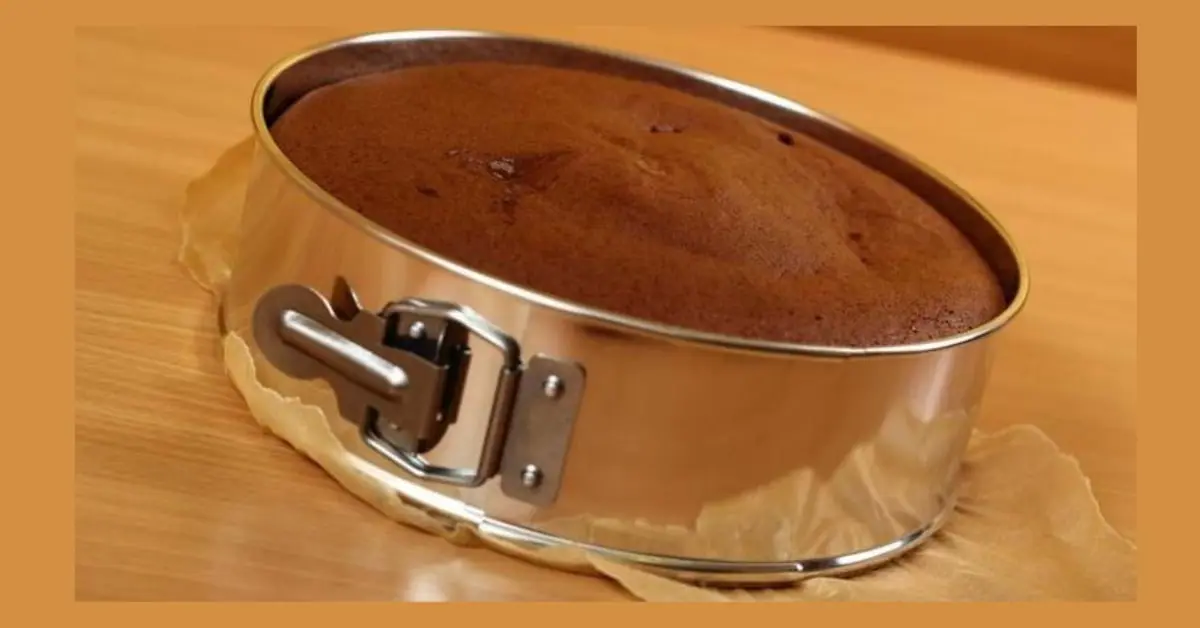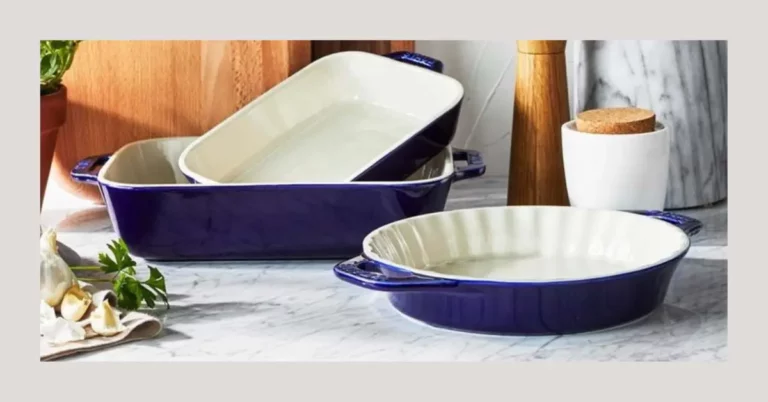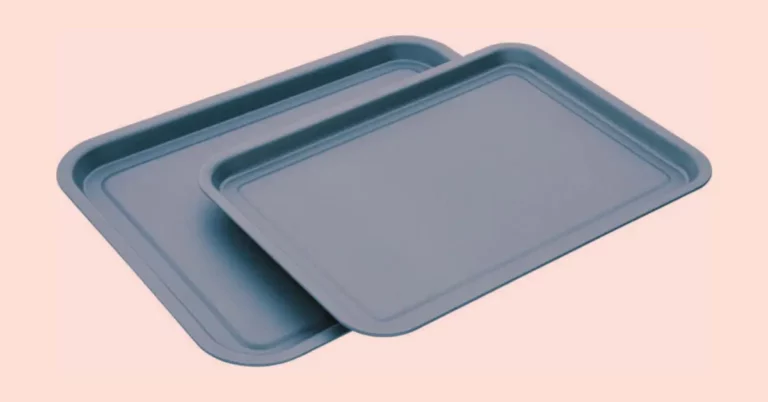Disclosure: As an Amazon associate, I may earn from qualifying purchases
Are you a baking enthusiast searching for the perfect tool to create flawlessly shaped and hassle-free desserts? Look no further than adjustable baking molds, with springform pans leading the pack.
These versatile culinary companions have gained immense popularity in recent years due to their unique design and ease of use.
If you’ve ever had burning questions about adjustable baking molds and how to make the most of them, you’ve come to the right place. In this post, we will address some of the most frequently asked questions surrounding these innovative molds, ranging from their functionality and baking time to essential usage precautions and greasing techniques.
Whether you’re a seasoned baker or just starting to explore the world of baking, understanding how baking molds work is essential. In this article, we have delved into the mechanics of springform pans, highlighting the unique features that set them apart from traditional baking utensils.
Their adjustable sides, allow you to effortlessly remove your baked creations without fear of ruining their shape or presentation. We also discuss the factors that influence baking time in this post and provide you with valuable tips to ensure consistent results every time.
Whether you’re baking a delectable cheesecake, a mouthwatering quiche, or an irresistible torte, our insights will help you achieve baking perfection.
Safety is paramount in the kitchen, and using adjustable baking molds requires a few precautions to ensure an enjoyable and accident-free experience.
From proper handling techniques to precautions against leaks and spills, we have attempted to answer your questions in detail to guide you through baking using springform pans.
We have also shed light on the greasing techniques that are best suited for these pans. Understanding how to properly grease an adjustable baking mold is crucial to prevent your creations from sticking or tearing apart when removing them from the pan.
Without much ado, lets get into it!
These versatile culinary companions have gained immense popularity in recent years due to their unique design and ease of use.
If you’ve ever had burning questions about adjustable baking molds and how to make the most of them, you’ve come to the right place. In this post, we will address some of the most frequently asked questions surrounding these innovative molds, ranging from their functionality and baking time to essential usage precautions and greasing techniques.
Whether you’re a seasoned baker or just starting to explore the world of baking, understanding how baking molds work is essential. In this article, we have delved into the mechanics of springform pans, highlighting the unique features that set them apart from traditional baking utensils.
Their adjustable sides, allow you to effortlessly remove your baked creations without fear of ruining their shape or presentation. We also discuss the factors that influence baking time in this post and provide you with valuable tips to ensure consistent results every time.
Whether you’re baking a delectable cheesecake, a mouthwatering quiche, or an irresistible torte, our insights will help you achieve baking perfection.
Safety is paramount in the kitchen, and using adjustable baking molds requires a few precautions to ensure an enjoyable and accident-free experience.
From proper handling techniques to precautions against leaks and spills, we have attempted to answer your questions in detail to guide you through baking using springform pans.
We have also shed light on the greasing techniques that are best suited for these pans. Understanding how to properly grease an adjustable baking mold is crucial to prevent your creations from sticking or tearing apart when removing them from the pan.
Without much ado, lets get into it!
Frequently Asked Questions
Do silicone pans take longer to bake?
Silicone pans generally take longer to bake than metal pans because silicone is an insulator and does not conduct heat as well as metal. This can result in longer baking times and possibly uneven baking if the pan is not properly preheated.
However, the exact baking time will depend on the recipe and the specific silicone pan being used, so it’s important to follow the recipe instructions and check the food for doneness as needed.
However, the exact baking time will depend on the recipe and the specific silicone pan being used, so it’s important to follow the recipe instructions and check the food for doneness as needed.
Do silicone muffin pans work?
Yes, silicone muffin pans work well for baking muffins and cupcakes. They are flexible, non-stick, and can withstand high temperatures, making them a popular choice for many bakers.
But it is also important to note that silicone muffin pans may require longer baking times than traditional metal muffin pans.
But it is also important to note that silicone muffin pans may require longer baking times than traditional metal muffin pans.
Why use a springform pan?
A springform pan is a type of cake pan that has removable sides and a removable bottom, held together by a spring latch.
It is commonly used for making delicate desserts that cannot be easily removed from a traditional pan without breaking or losing their shape, such as cheesecake or tortes.
The removable sides make it easy to remove the dessert from the pan without damaging it. The adjustable sides of the pan also allow for a more even and consistent baking of the dessert.
It is commonly used for making delicate desserts that cannot be easily removed from a traditional pan without breaking or losing their shape, such as cheesecake or tortes.
The removable sides make it easy to remove the dessert from the pan without damaging it. The adjustable sides of the pan also allow for a more even and consistent baking of the dessert.
Do springform pans always leak?
Springform pans can sometimes leak if they are not assembled or used properly. Here are several things you can do to prevent leaks:
- Make sure the base is properly attached to the sides of the pan before pouring in the batter.
- Place the pan on a baking sheet to catch any leaks that may occur.
- Wrap the outside of the pan with aluminum foil to create a seal that will prevent leaks.
- Make sure the latch on the pan is securely closed before baking.
How do you use a springform pan without leaking?
Springform pans can sometimes leak during baking, which can be frustrating. To prevent leaks, you can follow some of these tips:
- Make sure the pan is properly assembled: The bottom and the ring of the pan should be securely locked together.
- Line the bottom: Cut a circle of parchment paper to fit the bottom of the pan. Then, place it at the base and this will help to seal any gaps.
- Wrap the bottom of the pan with aluminum foil: This can help to prevent any batter from leaking out of the base.
- Place the pan on a baking sheet: This can help to catch any batter that may leak out of the pan.
- Avoid overfilling the pan. If the pan is too full, the batter may overflow.
Should I grease a springform pan when making a cheesecake in it?
Yes, it is recommended to grease a springform pan before making a cheesecake or any other baked goods to prevent it from sticking to the pan. Greasing the pan also helps to prevent any leaks.
You can use butter, cooking spray, or a light coating of vegetable oil to grease the pan.
You can also line the bottom of the pan with parchment paper to help prevent sticking and make it easier to remove the cheesecake from the pan.
You can use butter, cooking spray, or a light coating of vegetable oil to grease the pan.
You can also line the bottom of the pan with parchment paper to help prevent sticking and make it easier to remove the cheesecake from the pan.
Should you use parchment paper in a springform pan?
Using parchment paper in a springform pan can be helpful in preventing sticking and making it easier to remove the cake from the pan.
To use it, cut a piece of the parchment paper to fit the bottom of the pan and place it in the bottom before adding the batter.
This can also help prevent leaks if the pan is not completely sealed. It is still a good idea to grease the sides of the pan to ensure easy removal.
To use it, cut a piece of the parchment paper to fit the bottom of the pan and place it in the bottom before adding the batter.
This can also help prevent leaks if the pan is not completely sealed. It is still a good idea to grease the sides of the pan to ensure easy removal.
Do you let cake cool before removing from springform pan?
Yes, it is generally recommended to let a cake cool before removing it from a springform pan. This allows the cake to set and prevents it from breaking apart or sticking to the sides of the pan.
Once the cake has cooled to room temperature, you can release the sides of the pan and carefully remove it from the base.
Once the cake has cooled to room temperature, you can release the sides of the pan and carefully remove it from the base.
What is the best leak proof springform pan?
While your choice of springform pans may vary according to your preferences and needs, here are some popular options you can choose from:
When selecting a leak-proof adjustable baking mold, it’s important to consider factors such as size, material, and ease of use.
- Nordic Ware Leakproof Springform Pan: This pan features a tight-sealing silicone ring that helps prevent leaks. It also has a non-stick coating for easy release.
- Wilton Perfect Results Premium Non-Stick Springform Pan: This pan has a reinforced coating that resists scratches and stains, and its latch release makes it easy to remove your baked goods without damage.
- Kaiser Bakeware Noblesse Non-stick Springform Pan: This pan has a heavy gauge steel construction that promotes even baking and a two-layer non-stick coating for easy release. It also has a buckle release that makes it easy to remove your baked goods.
- USA Pan Bakeware Aluminized Steel Springform Pan: This pan is made of aluminized steel for durability and even heat distribution. It also features a silicone non-stick coating for easy release and a latch release for easy removal.
- OXO Good Grips Non-Stick Pro Springform Pan: This pan has a unique micro-textured pattern that promotes even baking and adds durability to the non-stick coating. It also has a leak-proof seal and a wide base for stability.
When selecting a leak-proof adjustable baking mold, it’s important to consider factors such as size, material, and ease of use.
Do you have to use aluminum foil for a springform pan?
Using aluminum foil in a springform pan is not always necessary, but it can help prevent leaks and make it easier to remove the cake or cheesecake from the pan.
If the recipe you are using suggests using foil or you are concerned about leaks, you can wrap the bottom and sides of the pan with a layer of aluminum foil before adding the batter or crust. This can also help to insulate the baking mold and promote even baking.
If the recipe you are using suggests using foil or you are concerned about leaks, you can wrap the bottom and sides of the pan with a layer of aluminum foil before adding the batter or crust. This can also help to insulate the baking mold and promote even baking.
Why is using a springform pan better than a regular cake pan?
Using a springform pan is better than a regular cake pan in certain situations because it allows you to easily remove delicate or sticky desserts without damaging them.
This type of pan has a removable bottom and a latch on the side that expands and contracts the ring, so you can release the dessert from the sides of the pan without turning it upside down.
This is especially useful for cheesecakes, tortes, and other delicate cakes that may crack or fall apart if you try to remove them from a regular cake pan.
These pans are often deeper than regular cake pans, which makes them ideal for layered cakes and desserts that require more height.
This type of pan has a removable bottom and a latch on the side that expands and contracts the ring, so you can release the dessert from the sides of the pan without turning it upside down.
This is especially useful for cheesecakes, tortes, and other delicate cakes that may crack or fall apart if you try to remove them from a regular cake pan.
These pans are often deeper than regular cake pans, which makes them ideal for layered cakes and desserts that require more height.
How do you get a cheesecake off the bottom of a springform pan?
You can try a few different methods to get it off:
With any of these methods, be sure to handle the cheesecake gently to avoid cracking or damaging it.
- Chill the cheesecake: Before removing the cheesecake from the pan, chill it in the refrigerator for several hours or overnight. This will make the cheesecake firmer and easier to handle.
- Use a spatula: Run a thin, flexible spatula around the edges of the cheesecake to loosen it from the sides of the pan. Then, gently slide the spatula under the cheesecake and lift it up and out of the pan.
- Use parchment paper: You can also line the bottom of the springform pan with a piece of parchment paper. This will make it easier to slide the cheesecake off the bottom of the pan.
- Invert the cheesecake: Some springform pans have a removable bottom that you can invert to release the cheesecake. If your pan has this feature, place it on a flat surface and carefully lift off the sides. Then, gently push the bottom of the pan up to release the cheesecake.
With any of these methods, be sure to handle the cheesecake gently to avoid cracking or damaging it.
What do you grease a springform pan with?
You can grease a springform pan with butter or non-stick cooking spray. Some people also use vegetable oil or shortening (a type of fat).
It’s important to grease the sides and bottom of the adjustable baking mold thoroughly to prevent sticking
It’s important to grease the sides and bottom of the adjustable baking mold thoroughly to prevent sticking




